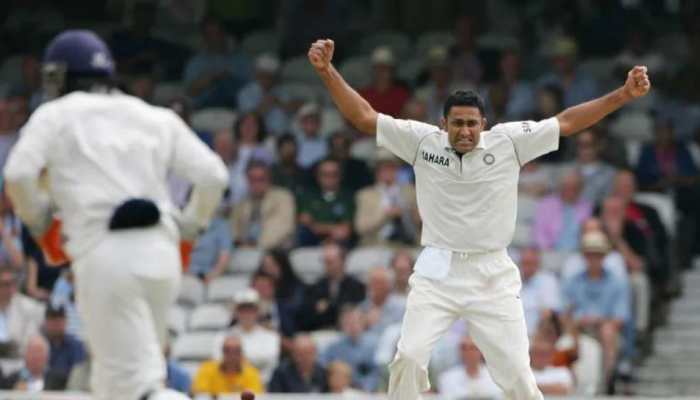Narendra Modi turns 72: Major changes in education sector under PM and way ahead - Read details
Narendra Modi turns 72: The new education system aspires to implement radical reforms in the classroom and higher education systems. The replacement of the education system, which is currently 34 years old, is another significant step in enhancing India's standing as a worldwide power.
- Modi government has emphasized the rapid transformation of the education sector, with a concentration on basic, secondary, and medical education
- The NEP intends to raise the current GER (Gross Enrollment Ratio) to 50 by 2035
- Online, open, and multi-modal learning have been strongly encouraged by both schools and higher education institutions
Trending Photos
) File Photo
File Photo Narendra Modi turns 72: The Modi government has emphasized the rapid transformation of the education sector, with a concentration on basic, secondary, and medical education. The Modi administration has announced the opening of new IITs, IIMs, IIITs, NITs, and NIDs since 2014. Since 2014, a new IIT or IIM has been established each year. There are currently 20 IIMs and 23 IITs located throughout the nation. Since 2014, two new colleges and one new university have been established every day. As a result, there are now significantly more students enrolled in higher education.
India had 723 universities in 2014, which would increase to 1,043 by 2020. In the same time period, the number of colleges increased from 36,634 to 42,343. The number of students enrolled in higher education rose from 3.45 crore in 2016 to 3.85 crore by 2020. In addition to this, Ladakh now has its own central university, the first forensic university, and 22 new universities have been established throughout the Northeast. A rail and transport university has also been established.
In 2021, a record 71 Indian universities were included in the World University Rankings, up from 63 the previous year. According to the QS World University Rankings, three Indian universities (IIT-Bombay, IIT-Delhi, and IISc Bengaluru) were among the top 200. The improvement of primary education is receiving a lot of attention. The infrastructure of schools, including power, libraries, girls' restrooms, and medical check-ups in schools, has improved along with the student-teacher ratio. Since 2015, there have been 8,700 Atal Tinkering Labs established. Girls' gross enrollment in higher education increased by 18% between 2015 and 2020.
The quality of medical education is increasing rapidly. Post-graduate seats have expanded by 80%, while MBBS seats have increased by 53% to increase accessibility. Six additional AIIMS have already begun operations, and 16 more are planned. The Academic Bank of Credit, which will offer multiple admission and exit alternatives for students in higher education, first-year engineering programmes in regional languages, and standards for the internationalisation of higher education, were highlighted in a PMO release from last year.
Along with SAFAL (Structured Assessment For Analysing Learning Levels), a competency-based assessment framework for Grades 3, 5, and 8 in CBSE schools, Vidya Pravesh, a three-month play-based school preparation module for Grade 1 students, Indian Sign Language as a subject at the secondary level, Nishtha 2.0, an integrated programme of teacher training designed by NCERT, and an artificial intelligence website are also among the initiatives that will be unveiled. Scholarships and student exchange programmes with other nations have also been implemented.
New implementations in Education Sector
- The NEP intends to raise the current GER (Gross Enrollment Ratio) to 50 by 2035. It is estimated that 3.5 crore more places for higher education will be added, according to the NEP.
- The growth of GER will be significantly influenced by open and distance learning. There will be initiatives like digital repositories and online courses, research funding, enhanced student services, and credit-based MOOC recognition, among others.
- Online, open, and multi-modal learning have been strongly encouraged by both schools and higher education institutions. This programme has significantly reduced the learning loss brought on by the Covid-19 outbreak and will significantly aid in bringing education to rural and hostile areas of the nation. The number of students registering for SWAYAM, DIKSHA, SWAYAM PRABHA, Virtual Labs, and other online resource portals has increased significantly.
- 2,774 Institution Innovation Councils have been established in HEIs throughout 28 States and 6 UTs in order to support a startup and innovation environment.
- Multilingualism is being emphasised in education and testing to ensure that students' scholastic performance is not hampered by a lack of English understanding. The States are releasing bilingual and trilingual textbooks at the foundational level with this goal in mind, and content on the DIKSHA platform is now available in 33 Indian languages.
Stay informed on all the latest news, real-time breaking news updates, and follow all the important headlines in india news and world News on Zee News.
Live Tv







)
)
)
)
)
)
)
)
)
)
